You may not find this terribly rewarding unless you're included here, so this is a good time for casual and random browsers to turn back before they get too caught up in the sweep and majesty of the proceedings and can't let go.
Dredging a channel and electrifying the fish on the Upper Mississippi River
We're on a study tour of the Upper Mississippi River National Wildlife and Fish Refuge with the Wisconsin Wetlands Association, hosted by personnel from a host of government agencies, including the US Army Corps of Engineers, the US Fish and Wildlife Service, the Wisconsin Department of Natural Resources (DNR), and the US Geological Survey (USGS).

Yesterday we spent the morning with classroom presentations at the Brice Prairie visitors centre of the US Fish and Wildlife Service in Onalaska, Wisconsin, adjacent to La Crosse, and devoted the afternoon to touring constructed islands and what not in "Pool 7", the term for the stretch of the Mississippi between Lock and Dam 6 and 7.
Today, 7 July 2017, we're on our way out to Pool 8, downstream from Lock and Dam 7, pictured above.

We start from the Wildcat Park Landing in Brownsville, Minnesota, 13km downriver from La Crosse.
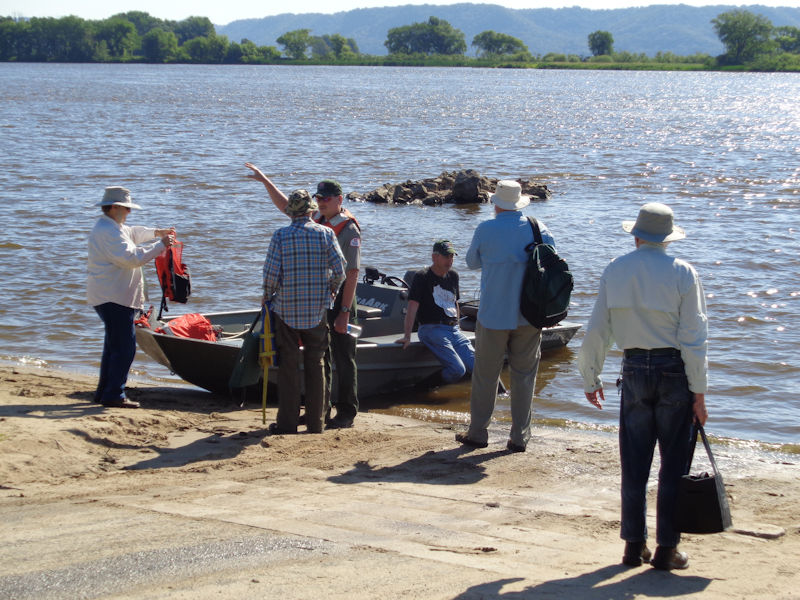
The interagency collaboration in the conservation and improvement efforts along the river is an amazing thing to see, the main reason for which is certainly the dedication and friendly good will of all the staff. Another reason is that the Congress has mandated and budgeted the US Corps of Engineers both to maintain a 9-foot deep navigation channel all along the river, and to avoid harming the environment as it does so.
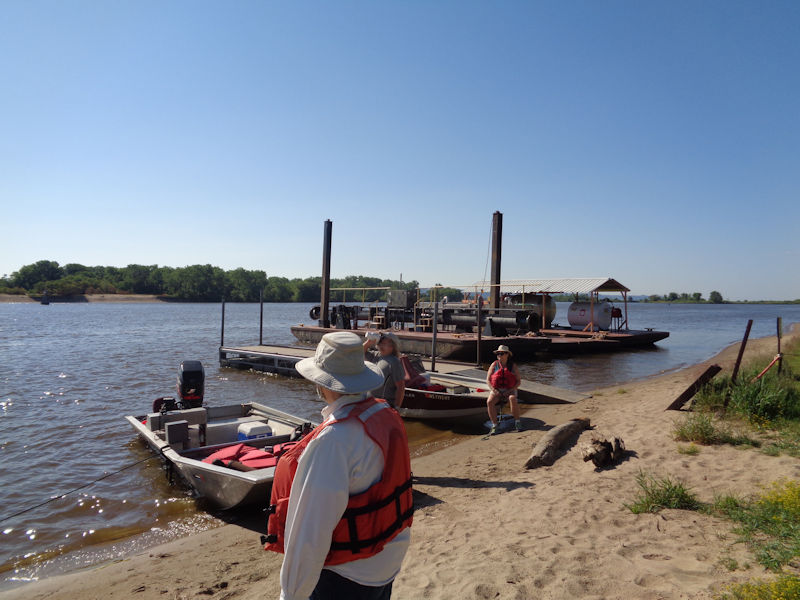
In light of that mandate, various synergies make good sense -- the continuous dredging, for example, turns up vast amounts of sandy 'spoils', which have to be put somewhere, and the Corps is pleased to have the professional cooperation of conservation and wildlife experts on the construction of artificial islands and other measures that also contribute to improving waterbird and fish habitat, creating recreation areas, amelioriating shoreline erosion, and so on. The other agencies and subcontractors from the universities are able to pursue a number of rehabilitation and improvement projects under the umbrella of that mandate and budget line.

We're in Pool 8 on our way to see the Corps of Engineers' channel dredging operation in progress.
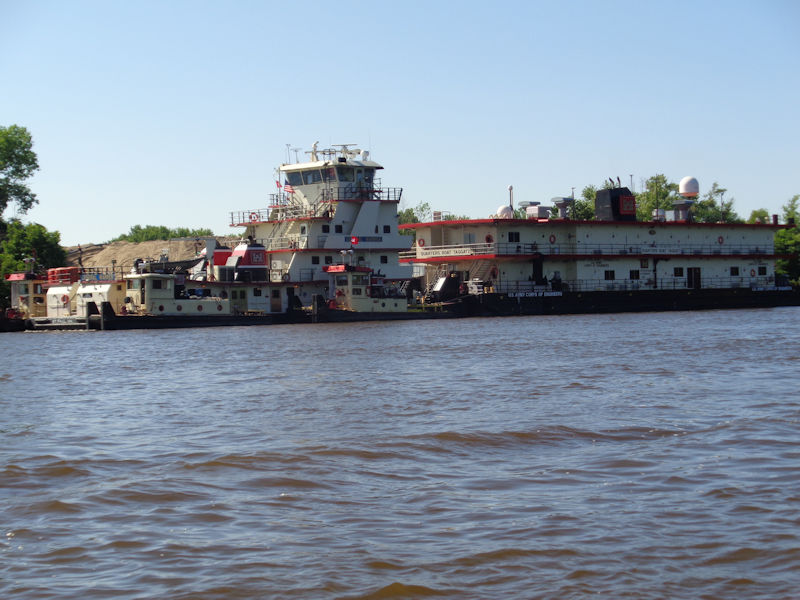
In Pool 8 and going back upstream, we're passing the towboat General Warren for the dredging operation, attached to the Quarters Boat Taggatz, providing lodgings for the crews, which work in shifts round the clock. In the background is some of the spoils pile being forced a kilometre or so through a hose from the dredger itself.

The Gen. Warren and the Taggatz quarters boat

A kilometre or more upriver we're coming up on the dredger Goetz.

The hose starts from the dredging instrument in the bow and extends off the back of the boat (on the right) and onto a pontoon bridge leading back to the spoils destination near the General Warren.
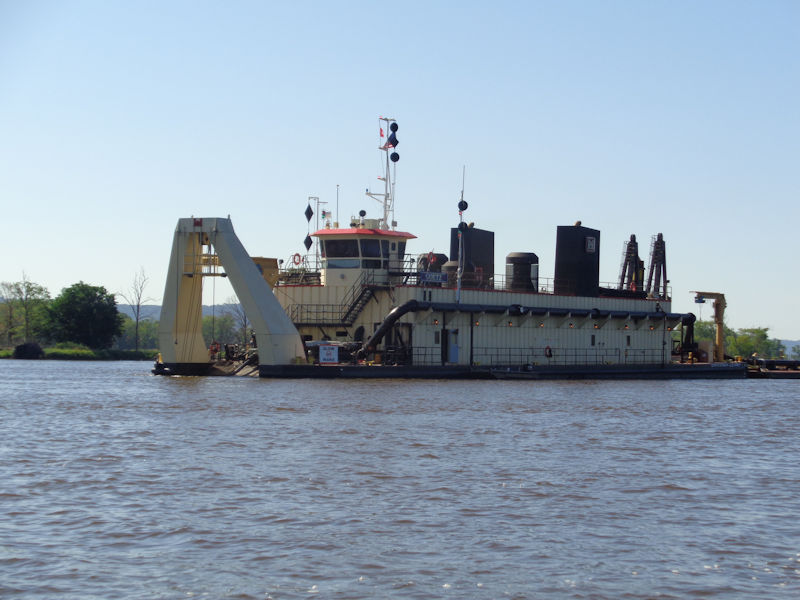
A good look at the Dredge William L. Goetz as we circle round for a better look at the business end, which is facing upstream


One of our guides, Randy Urich of the Corps of Engineers, is talking with the crew of the Goetz, asking whether it would be possible for them to raise the dredging instrument briefly for our edification.

It's coming up -- we're in luck today: the dredger is legally required to suspend its operations and open the hose pipeline whenever commercial barge traffic, or even a large recreational craft, is coming up the deep-water channel. A barge train is on its way, and the suspension of dredging is just beginning.

The dredger itself is just surfacing, and water is being forced through the pipeline to keep the sand and whatever from settling down in it.

More good luck, we've been invited aboard.

Single file please
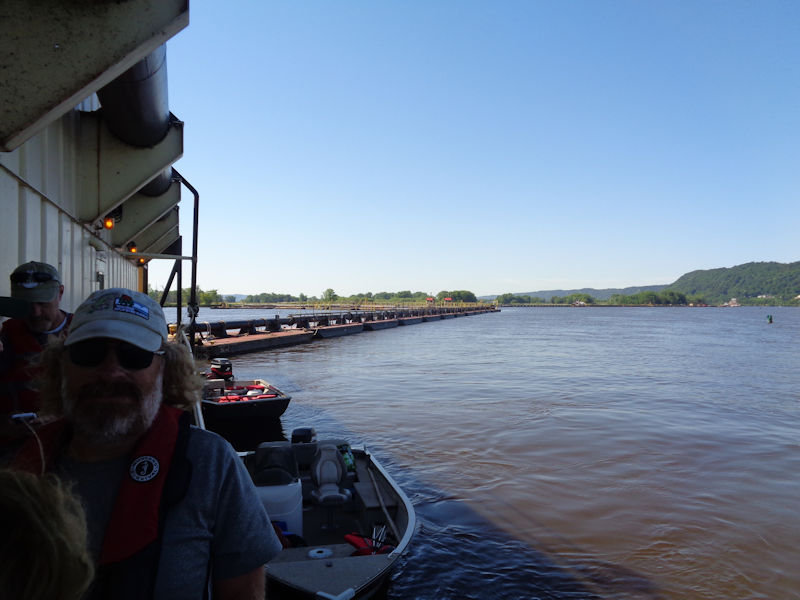
Here's a look at the pipeline on its pontoon bridge leading to the General Warren and the spoils pile perhaps 2km behind.
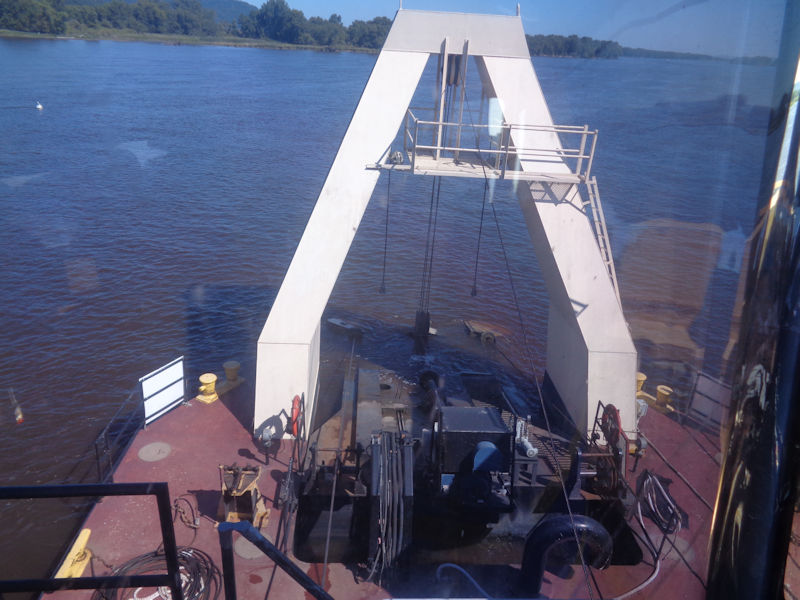
Hiking up to the bridge
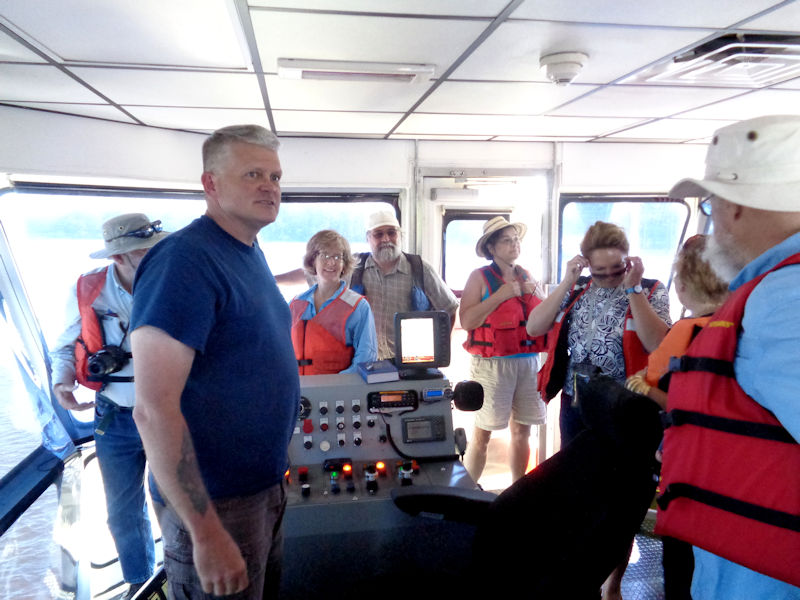
Mike is the dredger's pilot and has some downtime, as the barges come up the river, to explain the operation.
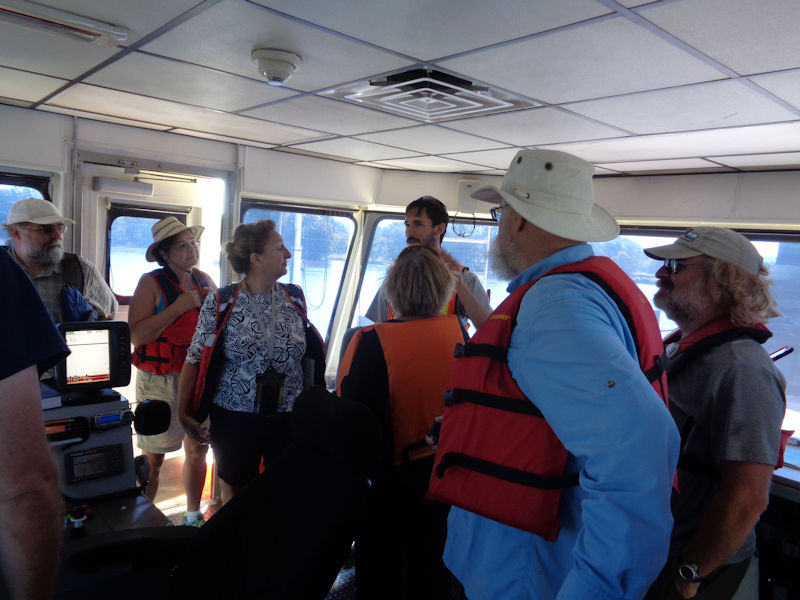
The gentleman in the back, providing more background on the dredger's work, is the project engineer who's visiting the boat for a mid-morning check-in.
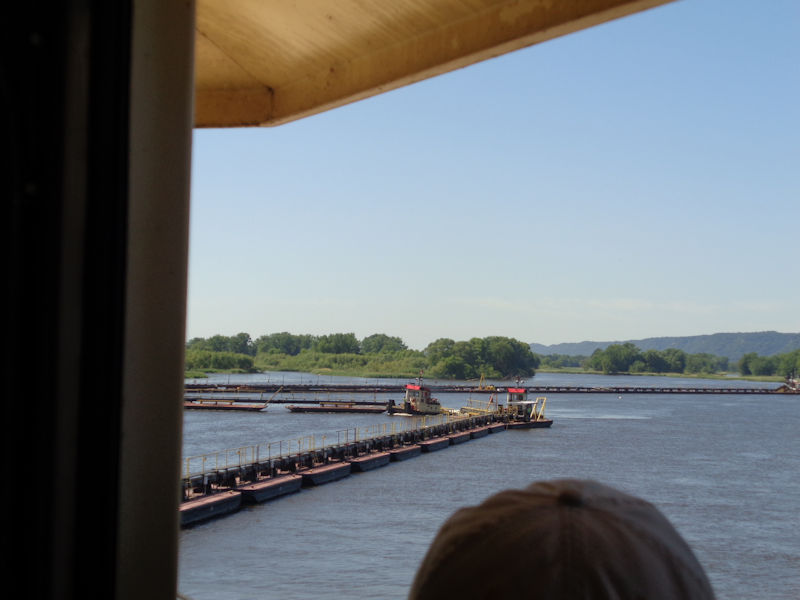
Two tugboats have unfastened the pipeline and are opening a passage up the channel.

The opened channel
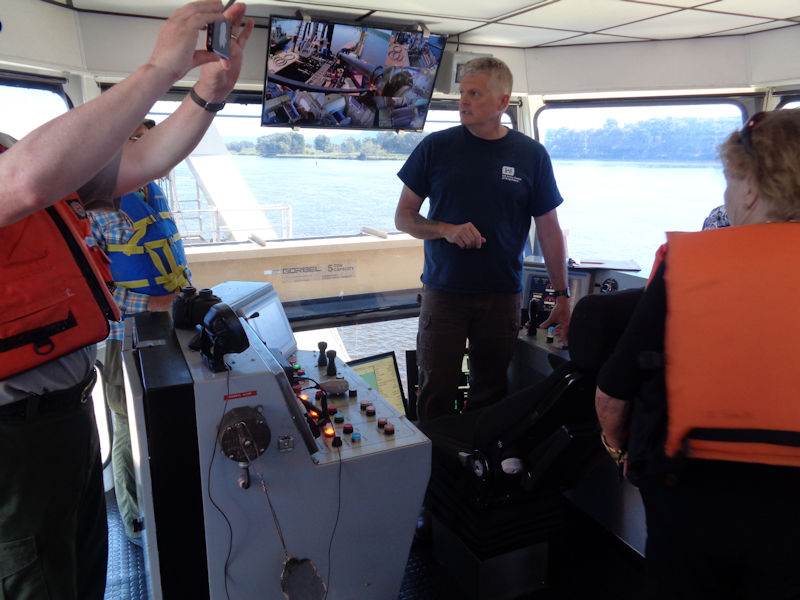
Most of our guides from the agencies have never had a chance to visit the Corps' dredger either, and cameras are clicking.

The barges coming up the river from Lock and Dam 8 and towards 7. The two tower things on the left are like legs that reach to the river bottom; by planting one and advancing the other, in turns as needed, the dredger can "walk" forward and swivel its bow back and forth in an arc to reach more of the channel.
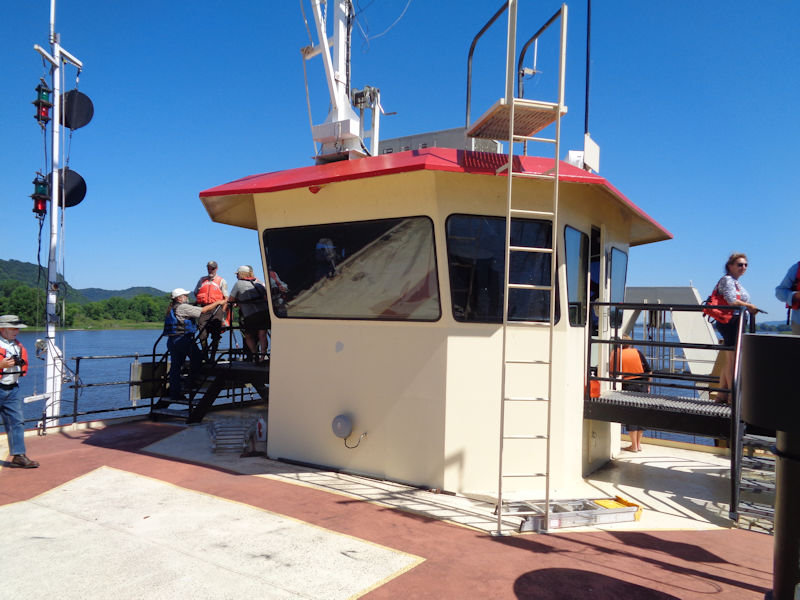
The bridge, with members of our party scattered all over the boat
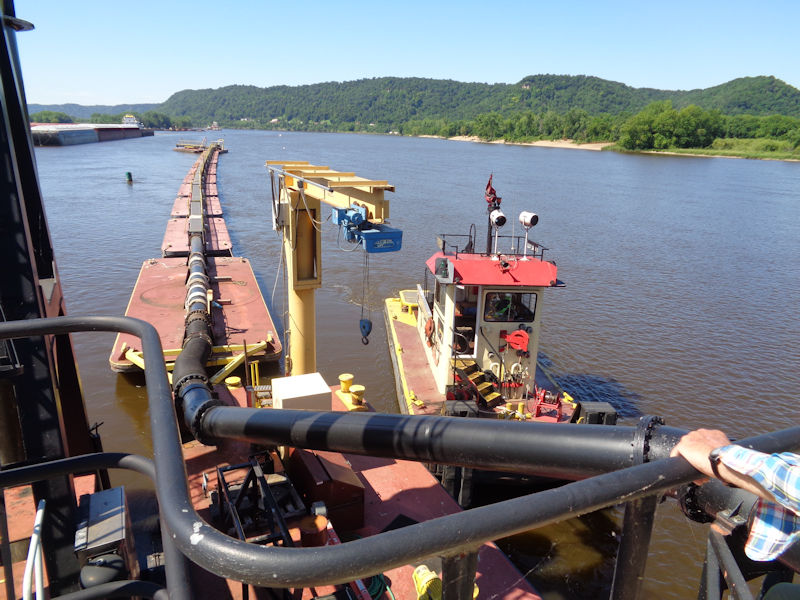
The barge train is coming through the gap in the pipeline, as the Minnesota-side tugboat is poised to begin pushing the pontoon bridge back into position. The whole operation is taking about half an hour.

The Goetz was commissioned in 2005, replacing an older version that had outlived its planned 50-year lifespan. The dredger cost about USD 10 million to build, its towboat the General Warren a little less than USD 6 million, and the crew quarters boat Taggatz about 10 million.
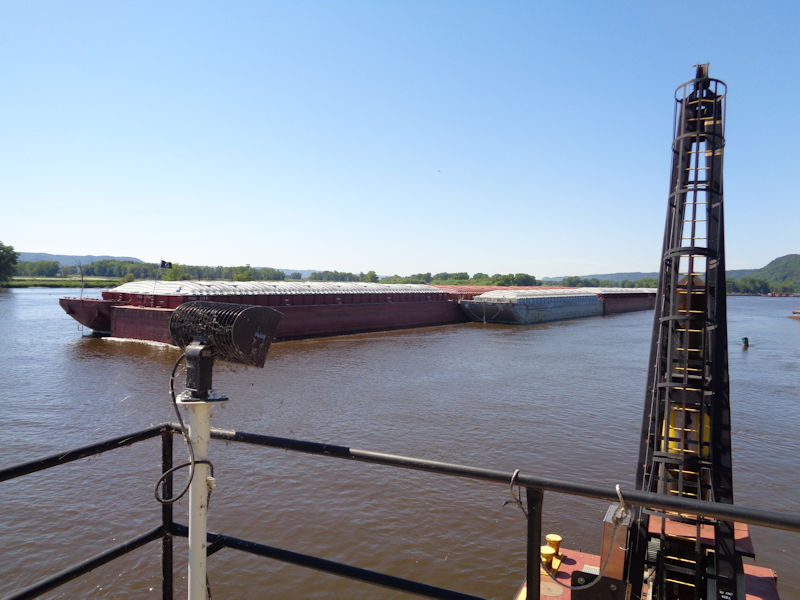
The barges passing the Goetz. Knowledgeable observers told us that, given their height above the water, they are probably empty on this upriver run.

The barges' good shepherd, the tugboat Kevin Michael, 54 metres long, built in 1957

Forcing the pontoon bridge back into position begins.

The Wisconsin-side tug gets back into position, too.

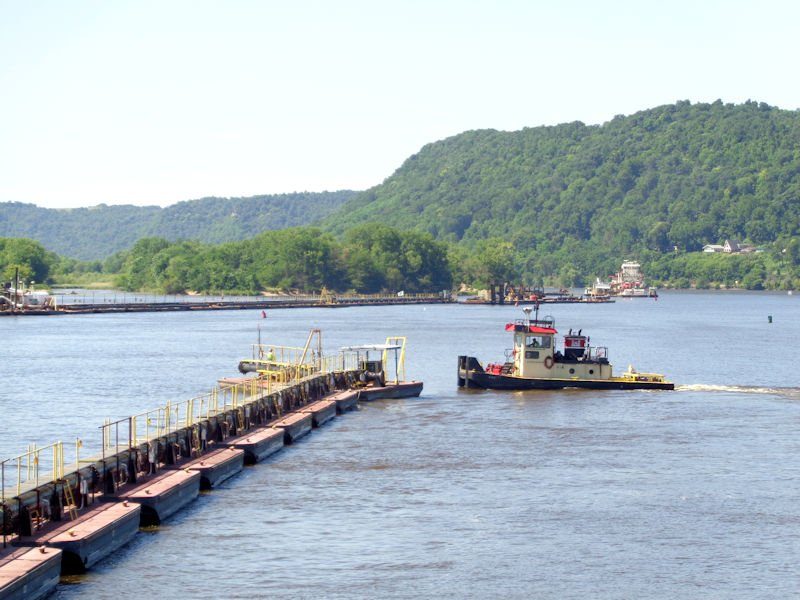
The tugboat Fiedler nudging its end of the bridge closed. The General Warren is visible in the distance.

A zoom view of the barge train proceeding upriver

We're leaving the Goetz, grateful to Pilot Mike.
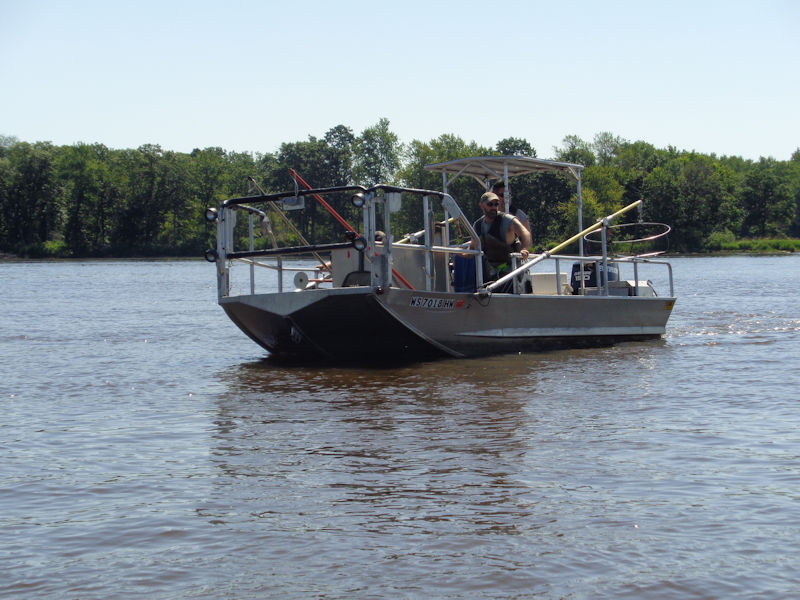
We're met by the crew of an electric fish monitoring boat, prepared to give us a demonstration.
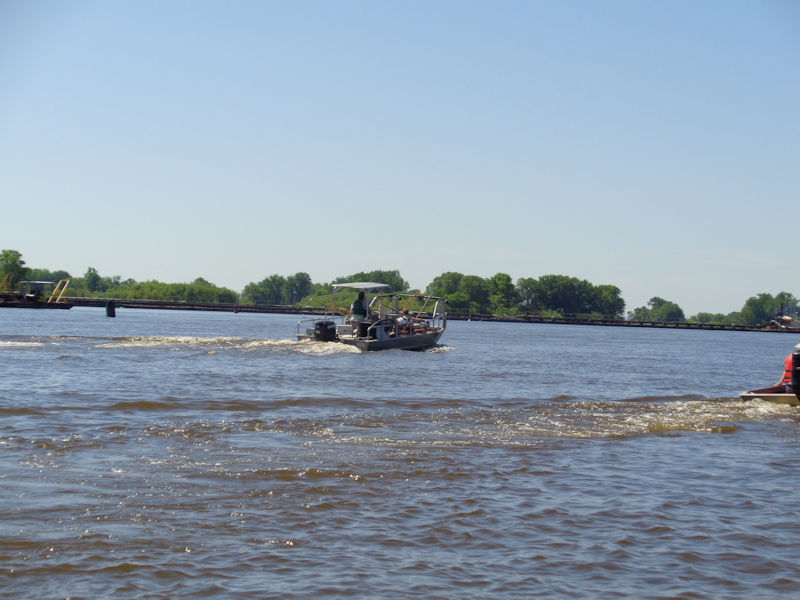
The plan is to lead us downriver again to a sheltered place more suitable for a mini-lecture on the monitoring project and a demonstration of how it works.

Off downriver
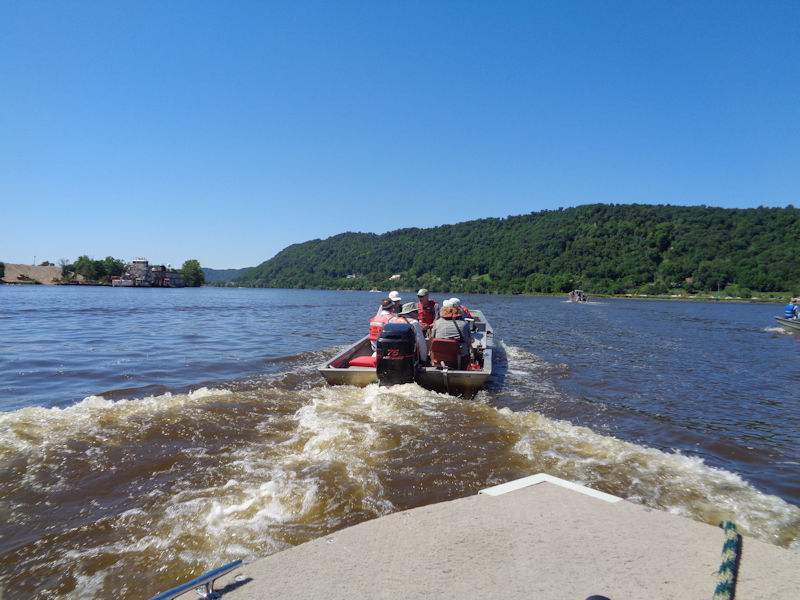
The General Warren off to the left and the Minnesota shoreline ahead
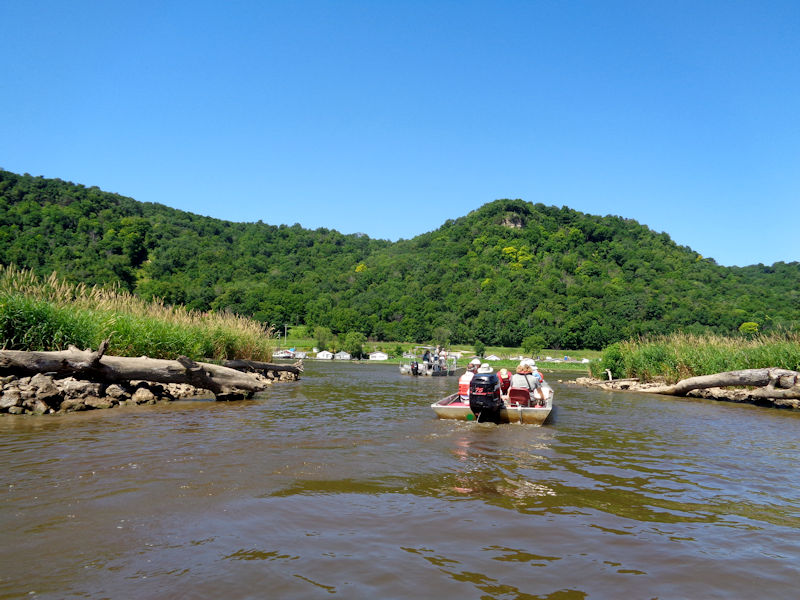
Into a sheltered bay near the Lawrence Lake Marina, a mile and a half north of Brownsville, MN
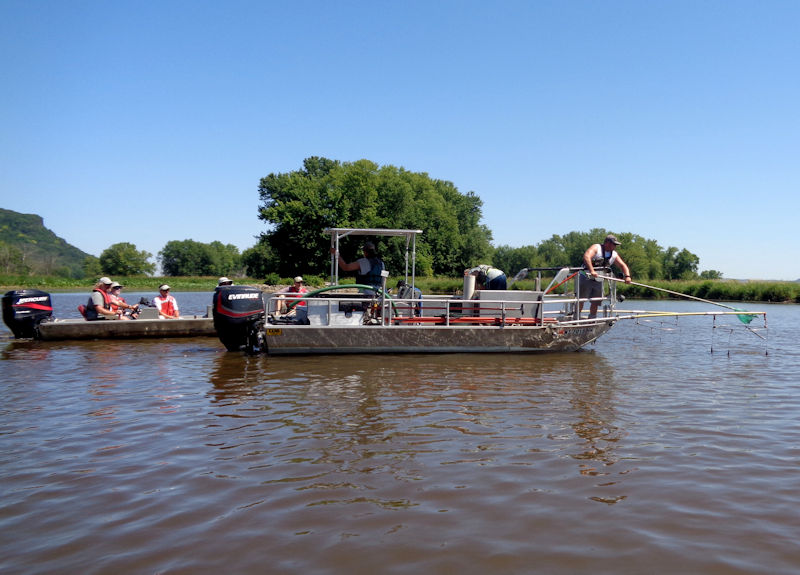
There are two electrical rings extended off the boat and a powerful generator on board -- an electrical pulse is fired through the rings, which stuns the fish within them, and the two powerful technicians net up the motionless fish and drop them into the grey tank near the bow. After identifying and counting them, and estimating their length and weight, the crew return them to the river unharmed.

An unconventional lecture hall
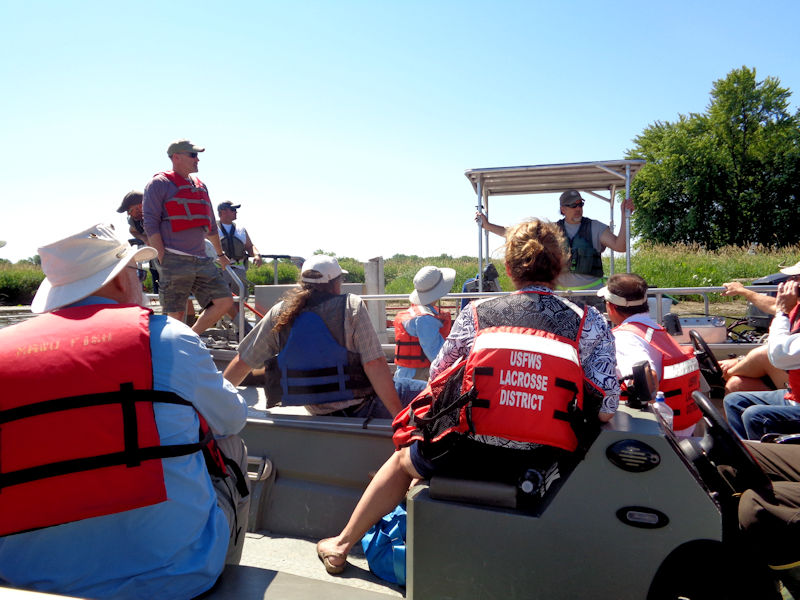
The fish biologist in charge of the boat explains the purpose of the project. We didn't record the names of the crew, but they are part of a long-term project that samples target spots all along the river, monitoring the relative populations of fish species over time, their numbers and health, and so on.

It's time for a brief demonstration.

Back out of the little bay to the main river

A blast of electricity, and the nets get to work


Into the tank. It's a short 5-minute session just for the demonstration.

Let's see what we've got. Mainly lots of huge carp . . .

. . . along with a good sample of other species, none of which I remember.

Serious fans of fish will probably recognize most of these.

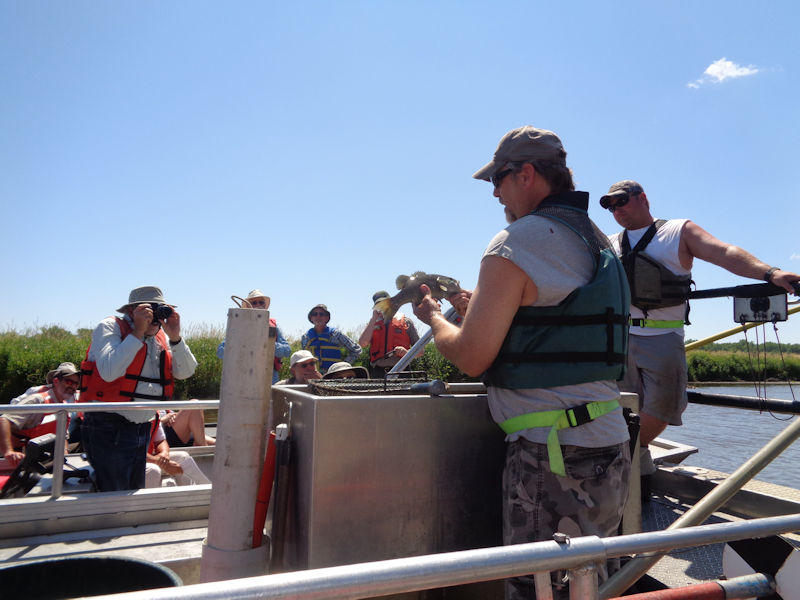

That's it for our demonstration; the crew goes back to their real work.
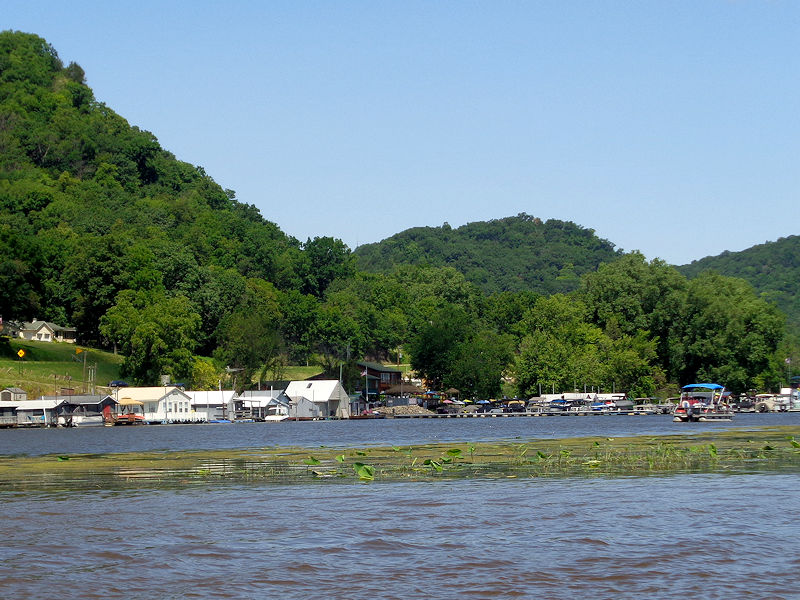
The Lawrence Lake Marina and Bait, and Bonefish Bar, with 72 boat slips: 'Live music, fun tiki bar, great bartenders, awesome steak fry on Fridays'.

No time for the tiki bar today, we're off now to visit a constructed island.
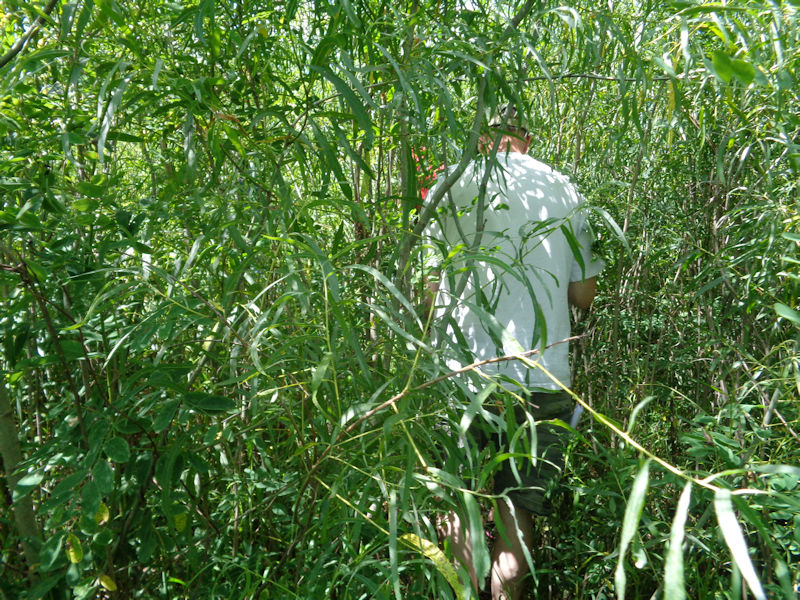
Happily, our guide for this portion of the tour knows the way in.

A good place for a description of this particular project, except for the horrible bugs.
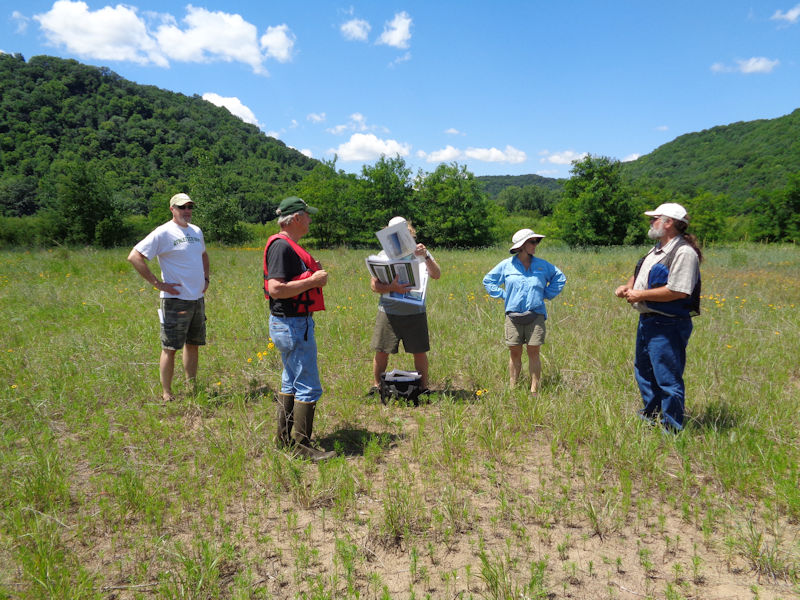
We're working our way through the DNR's Jeff Janvrin's posters. The Wisconsin Wetlands Association's Katie Beilfuss and Tracy Hames are on the right.

Our tour's finished -- back on the Interstate 90 bridge over French Island, with the La Crosse Regional Airport, and a leavetaking at the motel in Onalaska. That's a zoom view of Lock and Dam 7 from the bridge.
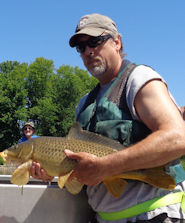 Dwight Peck's personal website
Dwight Peck's personal website














































































































































































